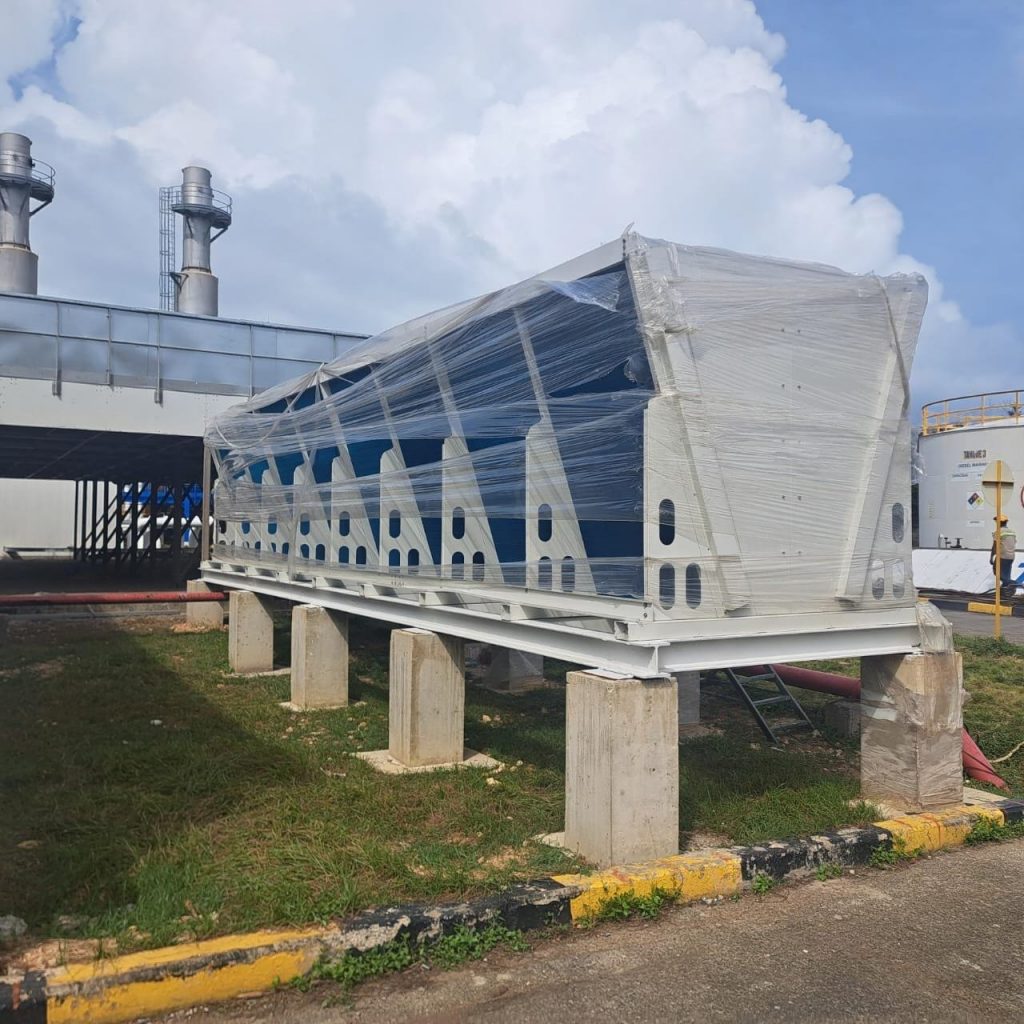| A dry cooling tower (also called an air-cooled heat exchanger) is used to cool process fluids (such as water, oil, or refrigerant) without water evaporation. Instead, it relies on airflow (natural or forced) to remove heat. Below are its primary functions: 1. Heat Rejection from Process Fluids Transfers waste heat from industrial processes, power plants, or HVAC systems to the atmosphere using air cooling instead of water evaporation. Commonly used in: Power plants (steam condensation) Refineries & chemical plants Data centers Geothermal & solar thermal systems 2. Water Conservation Unlike wet cooling towers, dry coolers do not consume water, making them ideal for: Arid regions Facilities with strict water usage regulations Sustainable projects aiming to reduce water footprint 3. Closed-Loop Cooling Operates in a sealed system, preventing fluid loss and contamination. The process fluid (e.g., water, glycol, or oil) circulates through finned tubes, where air cools it without direct contact. 4. Preventing Thermal Pollution Since no hot water is discharged into the environment, dry cooling towers help avoid: Harmful effects on aquatic ecosystems |
| Regulatory penalties for thermal discharge 5. Reducing Chemical Treatment Needs No water evaporation = no scaling, algae, or bacterial growth → less need for: Biocides Anti-scaling agents Corrosion inhibitors 6. Supporting Hybrid Cooling Systems Some plants use dry cooling + wet cooling (hybrid systems) to balance efficiency and water savings. Dry cooling handles base loads, while wet cooling assists during peak demand. Key Components & How They Work Component Function Finned Tubes Increase surface area for better heat transfer between fluid and air. Fans (Forced Draft) Enhance airflow for more efficient cooling (in mechanical draft systems). Air Inlet/Outlet Allows ambient air to pass over the tubes. Process Fluid Circuit Closed-loop system carrying hot fluid to be cooled. Comparison with Wet Cooling Towers Feature Dry Cooling Tower Wet Cooling Tower Water Use Zero evaporation High water loss Efficiency Lower (depends on air temp) Higher (evaporative cooling) Maintenance Less (no scaling/algae) More (water treatment needed) Energy Use Higher (fan power) Lower (pump power) Environmental Impact No water pollution Risk of drift & discharge Best Applications of Dry Cooling Towers |
